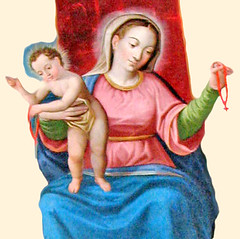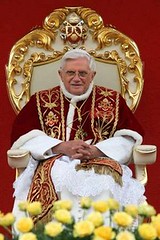The Icon of the Invisible God
 "Christ is the image of the invisible God, the firstborn of all creation." (Col 1:15)
"Christ is the image of the invisible God, the firstborn of all creation." (Col 1:15)Those words of St Paul led St John Damascene, whose feast normally falls today, the 4th of December to say: "Previously God, who has neither a body nor a face, absolutely could not be represented by an image. But now that he has made himself visible in the flesh and has lived with men, I can make an image of what I have seen of God... and contemplate the glory of God, his face unveiled" (quoted in the CCC, 1159).
As such, this saint and staunch defender of sacred images and enemy of iconoclasm is fittingly remembered in Advent, as we prepare to celebrate the coming of Jesus Christ as man, the God who revealed His face to us. "For, to see the human face of the Son of God... is to see the Word made flesh, the Lamb of God who takes away the sin of the world. Therefore art can represent the very form, the effigy of God's human face and lead the one who contemplates it to the ineffable mystery of God made flesh for our salvation... Sacred art must tend to offer us a visual synthesis of all the dimensions of our faith. Church art must aim at speaking the language of the Incarnation and, with the elements of matter, espress the One who 'deigned to dwell in matter and bring about our salvation through matter', according to Saint John Damascene's beautiful expression" (John Paul II, Duodecimum saeculum, 9, 11).
Therefore on this Sunday when we hear in the Gospel of St John the Baptist (above, as depicted in the Thornham Parva reredos and in our chapel) who pointed to the Lamb of God, it is fitting to reflect also with St John Damascene, who defended the importance of the sacred image, the icon, which points to the Word made flesh. Let us not only promote true Christian art but also dwell upon and venerate these sacred images that "turn towards us the look of Another who is invisible and gives us access to the reality of the spiritual and eschatological world" (ibid, 11).







0 Comments:
Post a Comment
<< Home